Homemade Tagliatelle and the Curse of Fresh Pasta
I've had a tumultuous history with fresh pasta. Though I adore dried pasta in all its forms and permutations, my adventures with the fresh can best be described as a disaster. I've wasted hours and honestly lost friendships to the stuff. For this I've relegated fresh pasta to something I may order at restaurants but never, ever make at home.
Perhaps I wasn't giving it a fair shot. When Blake and I first attempted to make fresh pasta not only did we not have a pasta machine, we didn't even have a rolling pin. To roll out the pasta we had to first drink a bottle of wine, and then use the empty body to roll out the dough. This sounded like a great idea at first, probably because of the wine, but after a few passes with the impromptu pin we realized that dough and glass rather like each other. Huge hunks would stick to the bottle, and only with generous pounds of flour were we able to get the two from sticking together.
That was only the beginning of the problems. We could never get the pasta thin enough, and thick pasta comes out gummy. Whenever we came close to the right thickness it would inevitably rip and we'd have to start all over. We succeeded once, after spending what felt like a few torturous hours of kneading and rolling out the dough. The little delicate raviolis were incredibly tender and delicious. But the effort exerted, and the enormous mess that resulted, didn't seem worth it. Tellingly, we never made the meal again.
That all changed two days ago, when I got a brand new Atlas Pasta Machine, and my feelings towards fresh pasta changed forever. The process of rolling out the dough took a matter of minutes, and the results were some of the best pasta I'd ever eaten.
But while the pasta machine made the whole ordeal much easier, it didn't tell me what to put into the dough - how many eggs, whether it should include oil, and, most importantly, what kind of flour is best. I decided to make a few batches of tagliatelle made with different types of flour to see which version I liked best. Once I figure this part out a true ragu will certainly be in order.
The Flour
I know exactly ZERO about flour. While I settled on this recipe from Saveur for the proportions of ingredients, I had no idea what kind of flour I should use. The Saveur recipe says to use flour, but not which kind. Jamie Olive recommends tipo 00 flour or pasta flour, which he says is a "finely sieved" and "soft". The Silver Spoon says regular all-purpose flour is fine. Marcella Hazan says to use unbleached all-purpose flour. geez...
All I had at home was basic flour, so I needed to head to the stores to see what was available. I couldn't find tipo 00 flour anywhere around me, but I did find something called "No 1 Durum Wheat Semolina Flour: Superb Pasta by Hand or Machine" made by Bob's Red Mill . I know this is what is used to make dried pasta, but would it work for fresh? On the back of the package it gave a recipe and a few recommendations (including a statement that some people make pasta dough with half semolina and half all-purpose flour). The only problem is that it looked coarse and far from the finely sieved flour Jamie was calling for, so I also bought some cake flour, which more closely resembled the descriptions. Onward
I made three different doughs.
1. 100% Semolina flour
2. 50% Semolina flour and 50% all-purpose flour
3. 100% cake flour
For each I followed the same recipe from Saveur .
- 3 cups of flour
- 1 tsp kosher salt
- 3 eggs
- 1 egg yolk
- 2 tablespoons water
- 1 tablespoon olive oil
Since I was making so many versions, I cut everything in half, which also meant I had to use 1 1/2 eggs for every pile of flour. To do this I just whisked together 3 eggs and 1 yolk in a large bowl and divided that mixture in half. No worries.
Combine all the ingredients in a very large bowl and slowly whisk everything together with a fork until the mixture looks sort of like breadcrumbs. Dump this on a cutting board and begin kneading.
Most recipes said to knead until it looked smooth. Saveur said this would take about 10 minutes and that was about right for all three.
That sounds like a long time, but Abby and I just took turns folding the dough over and smashing it back down. It's actually kind of fun. When it is smooth, form it into a ball, wrap it tightly in plastic wrap and set it aside for 30 minutes.
Here I could really see a real difference in the kinds of flour. The half semonlina and half all-purpose one is on the left, while the 100% semonlina is on the right. The 100% cake flour was nearly white.
Cut each ball in half. (If you make the full recipe, with 3 cups of flour, then you should cut each ball into quarters.) Immediately rewrap the half that is not being used. You don't want the dough to dry out.
Form the dough into something resembling a rectangle and then feed it through the widest setting of the machine. Fold the long sheet lengthwise into thirds. Repeat this step three more times.
After the forth time, decrease the width by one setting and feed it through. Fold into thirds and then decrease the setting again and feed it through. Repeat this until you are down to the second to the last setting, or on 1/16th of an inch.
By this time, the dough had stretched off the cutting board and nearly on to the computer. This long sheet is then cut into 8-inch segments. Dust one segment with a little flour, and then fold in half lengthwise. Repeat folding in half two more times, making sure to dust lightly with flour each time. Repeat with the other segments.
Then cut each segment into 1/2 inch piecies.
Carefully unfold the strands (this is why dusting with flour is essential).
Bring a large pot of water to a boil. Cook for 2-3 minutes, but start tasting after a minute. The semolina needed nearly 2 1/2 minutes, but the pasta made with cake flour was done at a minute. Toss into a colander to drain.
I topped each one with just a little bit of butter, parmesan, black pepper, and kosher salt.
The verdict was absolutely unanimous. The 100% semonlina flour had more flavor and much firmer texture. Though delicate, it was still had that al dente bite. The pasta made from cake flour looked like pasta, but it had no bite and tasted incredibly bland. The half and half surprisingly didn't work at all. It constantly ripped in the pasta machine, and the few strands that did make it to the water were not very good.
I'm not sure if there are any other flours that would work better, but I'm not going to spend any time looking for them. The 100% semolina flour was incredibly good. It's my go-to fresh pasta flour.
Next up, a sauce that can stand up to the remarkable pasta.
Dough, Fresh Pasta, Parmesan, Pasta, Pasta, Pasta Machine, Semolina Flour, Tagliatelle

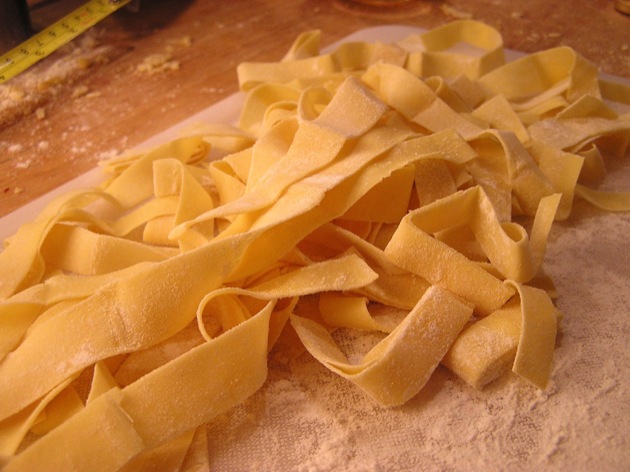
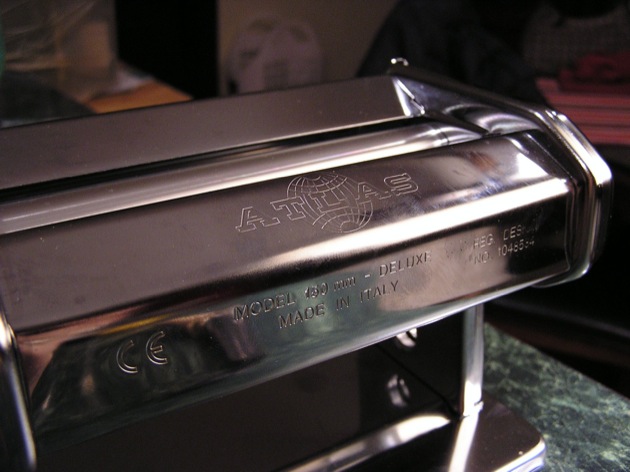
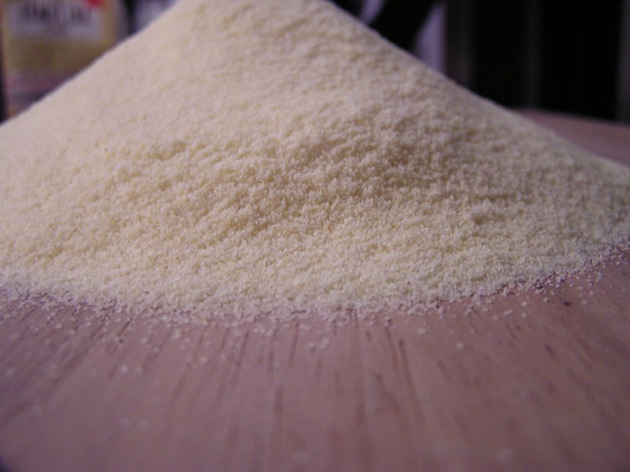
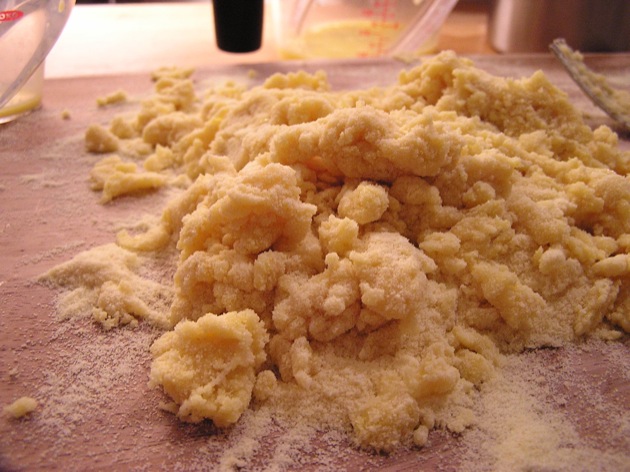
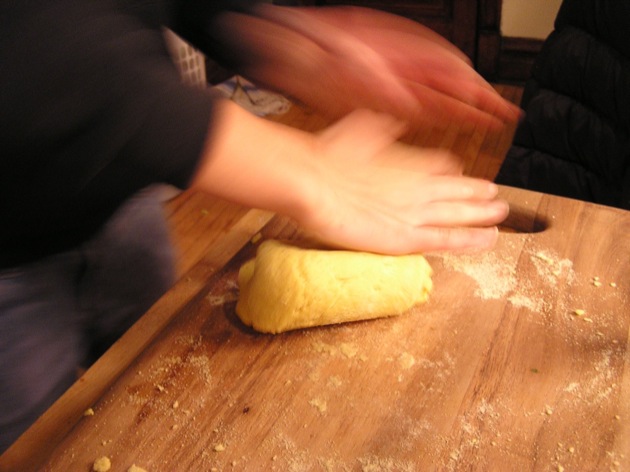
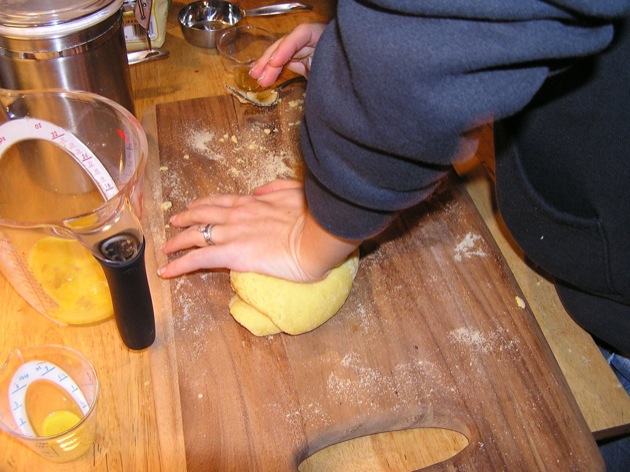
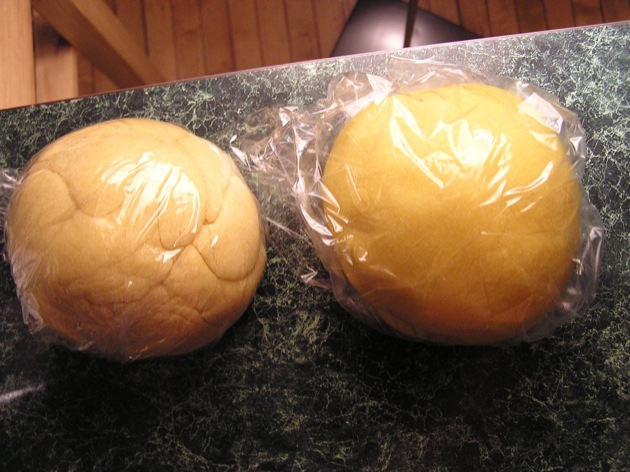
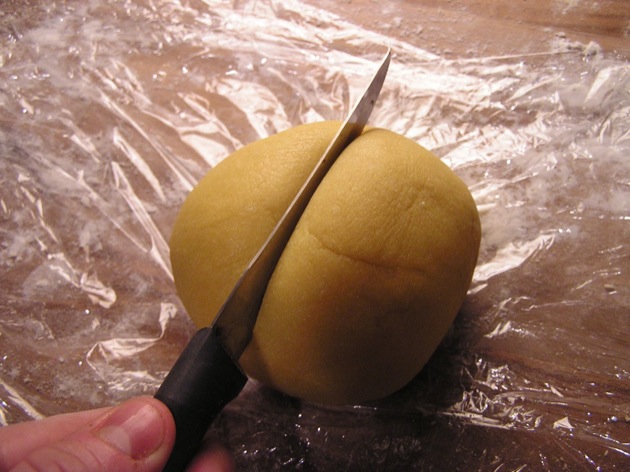
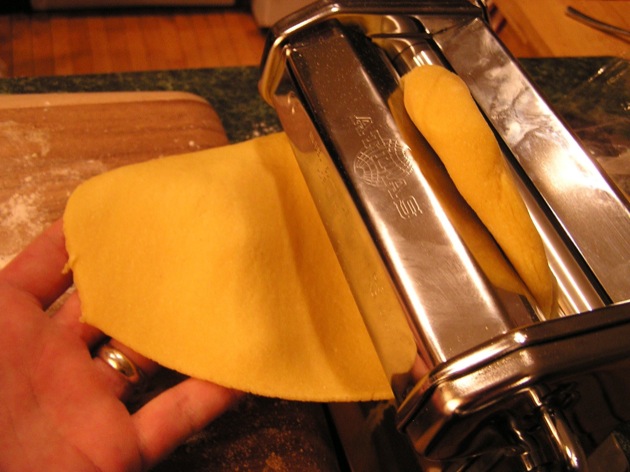
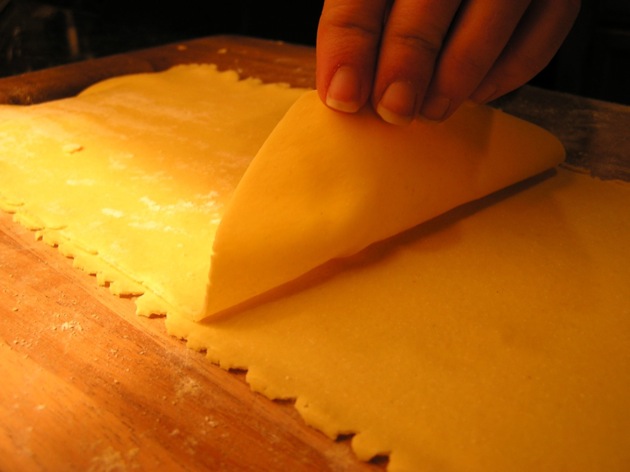
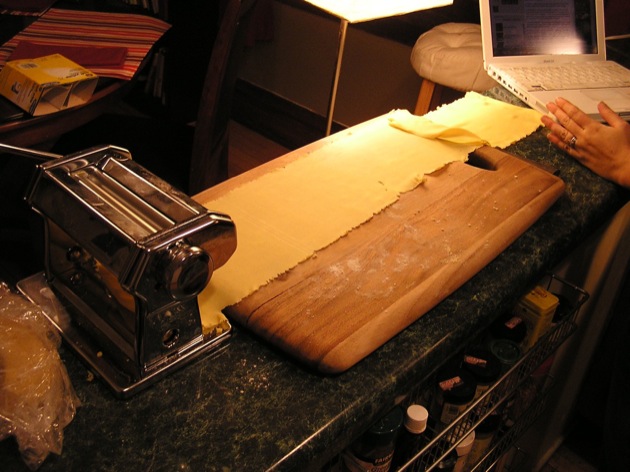
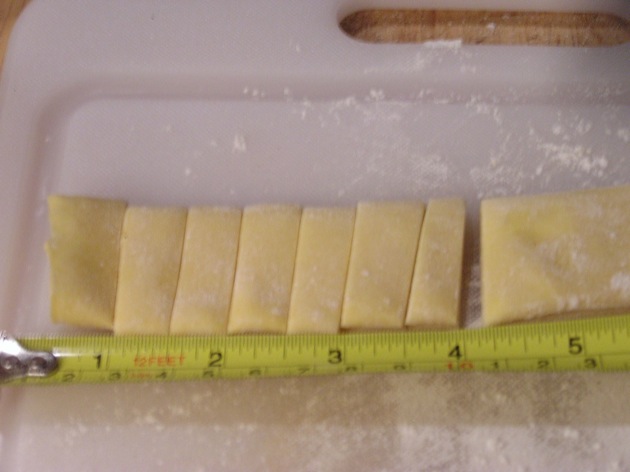
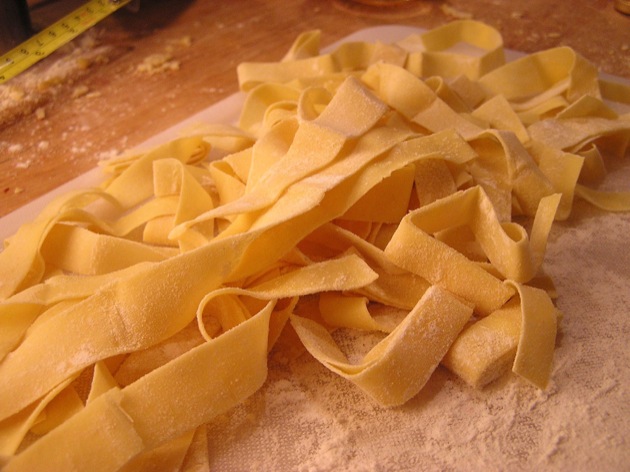
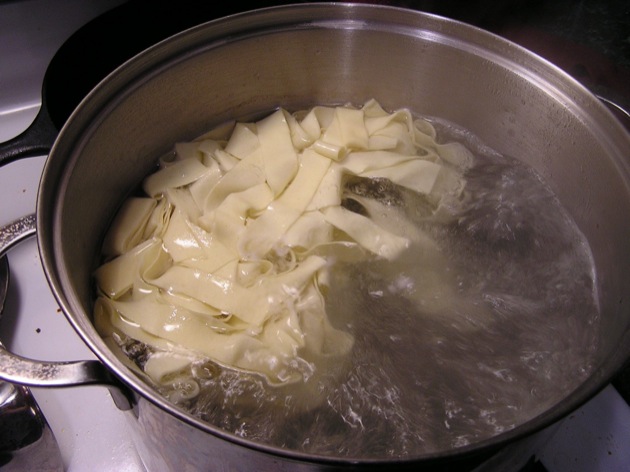
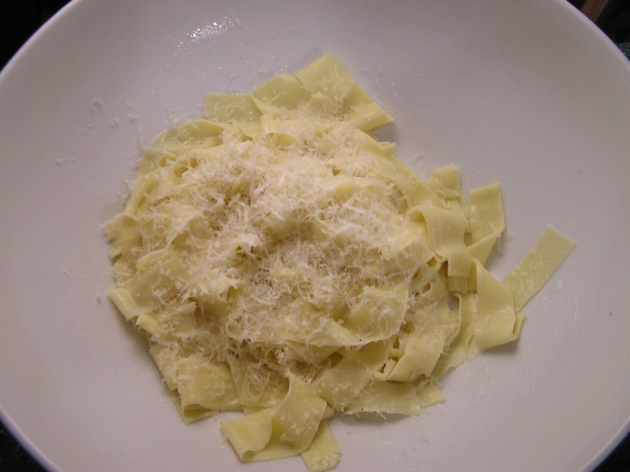
Comments:
Blog Comments powered by Disqus.